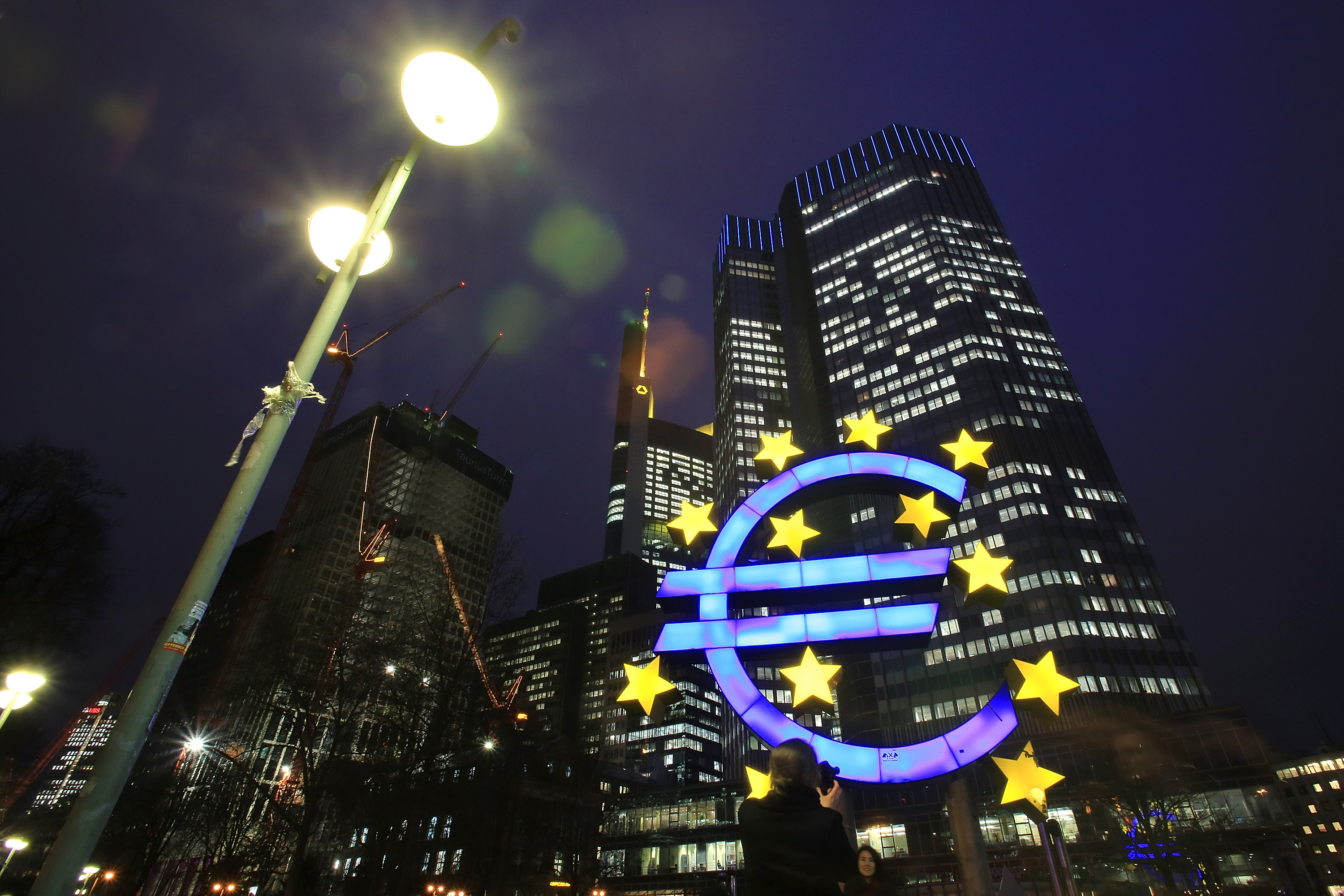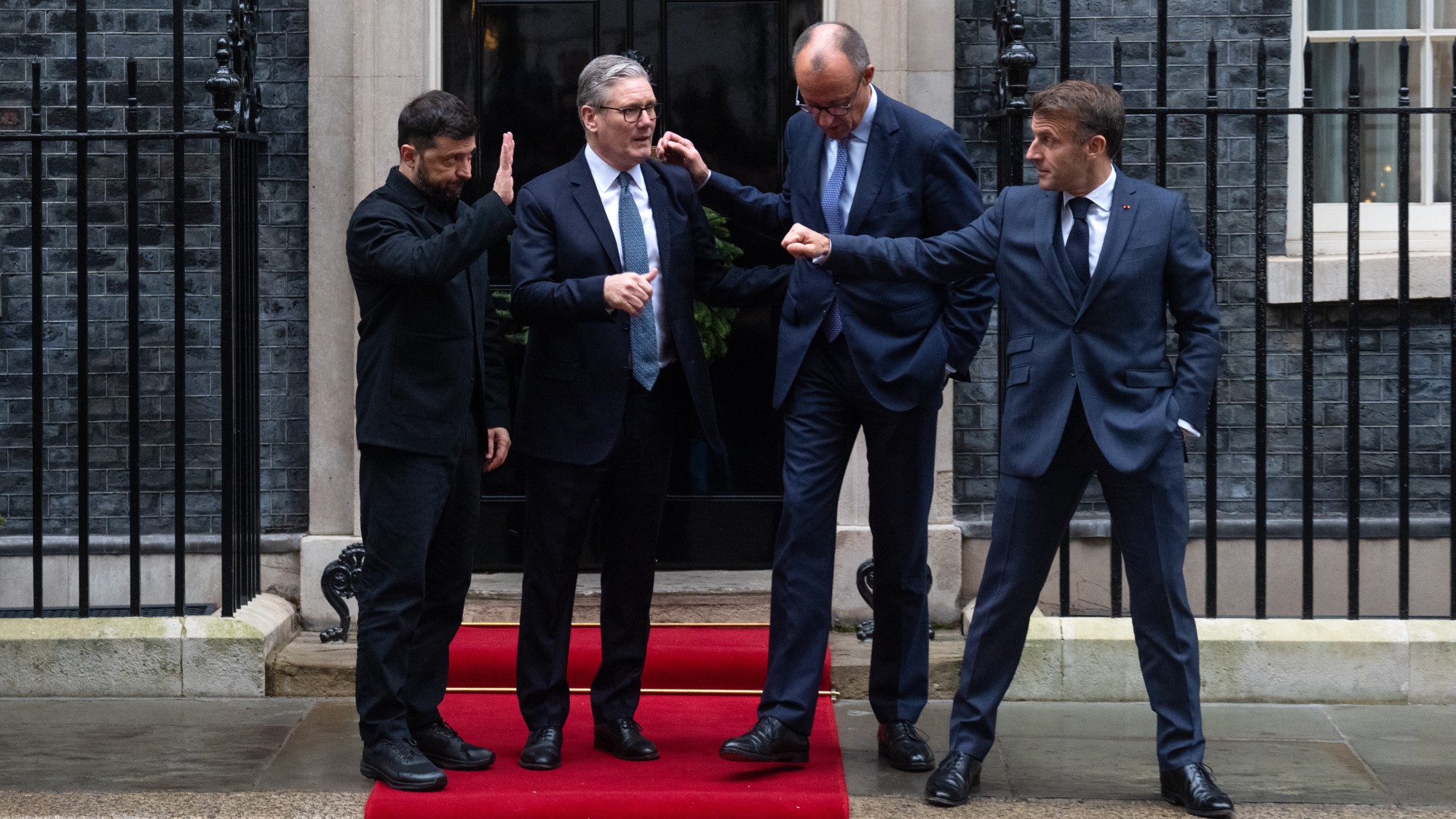Can easy money save the eurozone?
Everything you need to know, in five paragraphs

Europe's central bankers are taking a page out of the Federal Reserve's playbook, said Matt O'Brien at The Washington Post. The European Central Bank announced last week that it will launch a $1.3 trillion asset-purchasing program to "reverse the continent's long, slow slide into economic stagnation." The strategy, known as quantitative easing, involves snapping up $69 billion in government and private bonds each month, mirroring the Fed's recently ended, six-year QE program, which some analysts have credited with helping keep the U.S. economy in a sustained recovery mode.
But Europe might be a different story, said John Cassidy at The New Yorker. In theory, QE "causes the price of bonds to rise, which translates to a fall in interest rates." That triggers an increase in borrowing, and, eventually, more "spending by businesses and households," which helps pull the economy out of its slump. But the ECB's biggest challenge will be psychological. The eurozone has been "trapped in a malaise" for several years, and as a result, "businesses have been reluctant to make capital investments, consumers have been reluctant to spend, and banks have been reluctant to lend."
Good luck turning that around, said Paul Wallace at The Economist. Under its version of QE, the eurozone's 19 member nations will buy their own governments' bonds "and bear any risk of losses." That and other measures are designed to protect ECB shareholders in case of a sovereign default — like what will happen if Greece goes ahead with its plans to abandon the euro. The ECB has hedged against that by announcing that Greek bond purchases will be off the table when the QE program starts in March. In exchange, the central bank's purchasing program is more aggressive than expected. But the trade-off "is an important breach in the ECB's usual risk-sharing arrangements," which could lead to the kind of fragmentation it has long sought to avoid.
The Week
Escape your echo chamber. Get the facts behind the news, plus analysis from multiple perspectives.

Sign up for The Week's Free Newsletters
From our morning news briefing to a weekly Good News Newsletter, get the best of The Week delivered directly to your inbox.
From our morning news briefing to a weekly Good News Newsletter, get the best of The Week delivered directly to your inbox.
It's "still a worthwhile effort," said Jordan Weissmann at Slate. With unemployment at more than 11 percent, anemic growth, and the specter of a deflation crisis, the ECB "needs to do something to revive the eurozone, and quantitative easing is the biggest untried tool in its arsenal." But it's no panacea. Until Europe can shift its focus away from reducing debt and toward "fiscal stimulus and reforms that would fix its calcified, uncompetitive labor market in the most troubled countries," the ECB will face an uphill climb.
This all goes to show there is such a thing as being "too responsible," said Paul Krugman at The New York Times. By ignoring "the evidence in favor of a narrative that placed all the blame on budget deficits," Europe embraced a policy of austerity and an inflation phobia that doomed its economy from the start. "True, there have been times when being tough meant reducing deficits and resisting the temptation to print money. In a depressed economy, however, a balanced-budget fetish and a hard-money obsession are" — and were — "deeply irresponsible."
A free daily email with the biggest news stories of the day – and the best features from TheWeek.com
-
 Political cartoons for December 12
Political cartoons for December 12Cartoons Friday's political cartoons include presidential piracy, emissions capping, and the Argentina bailout
-
 The Week Unwrapped: what’s scuppering Bulgaria’s Euro dream?
The Week Unwrapped: what’s scuppering Bulgaria’s Euro dream?Podcast Plus has Syria changed, a year on from its revolution? And why are humans (mostly) monogamous?
-
 Will there be peace before Christmas in Ukraine?
Will there be peace before Christmas in Ukraine?Today's Big Question Discussions over the weekend could see a unified set of proposals from EU, UK and US to present to Moscow
-
 The pros and cons of noncompete agreements
The pros and cons of noncompete agreementsThe Explainer The FTC wants to ban companies from binding their employees with noncompete agreements. Who would this benefit, and who would it hurt?
-
 What experts are saying about the economy's surprise contraction
What experts are saying about the economy's surprise contractionThe Explainer The sharpest opinions on the debate from around the web
-
 The death of cities was greatly exaggerated
The death of cities was greatly exaggeratedThe Explainer Why the pandemic predictions about urban flight were wrong
-
 The housing crisis is here
The housing crisis is hereThe Explainer As the pandemic takes its toll, renters face eviction even as buyers are bidding higher
-
 How to be an ally to marginalized coworkers
How to be an ally to marginalized coworkersThe Explainer Show up for your colleagues by showing that you see them and their struggles
-
 What the stock market knows
What the stock market knowsThe Explainer Publicly traded companies are going to wallop small businesses
-
 Can the government save small businesses?
Can the government save small businesses?The Explainer Many are fighting for a fair share of the coronavirus rescue package
-
 How the oil crash could turn into a much bigger economic shock
How the oil crash could turn into a much bigger economic shockThe Explainer This could be a huge problem for the entire economy